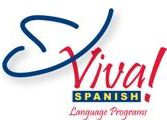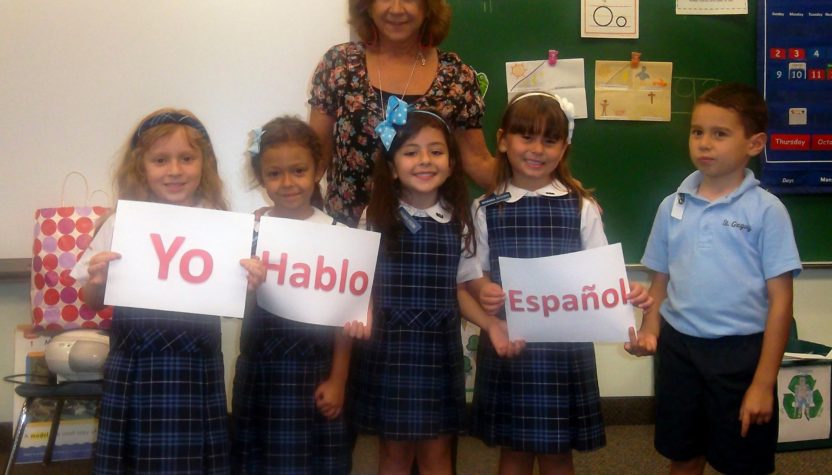| Kindergarten – 3rd Grade Targets | |||
| Listening | Speaking | Reading | Writing |
| At the Novice Low level, listeners are able occasionally to recognize isolated words or very high-frequency phrases when those are strongly supported by context. | Speakers at the Novice Low level, given adequate time and familiar cues, may be able to exchange greetings, give their identity, and name a number of familiar objects from their immediate environment. | At the Novice Low level, readers are able to recognize a limited number of letters, symbols or characters. They are occasionally able to identify high-frequency words and/or phrases when strongly supported by context.
|
Writers at the Novice Low level are able to copy or transcribe familiar words or phrases, form letters in an alphabetic system, and copy and produce isolated, basic characters. |
| 4th – 5th Grade Targets | |||
| Listening | Speaking | Reading | Writing |
| At the Novice Mid level, listeners can recognize and begin to understand a number of high-frequency, highly contextualized words and phrases including aural cognates and borrowed words. | Speakers at the Novice Mid sublevel communicate minimally by using a number of isolated words and memorized phrases limited by the particular context in which the language has been learned. | At the Novice Mid sublevel, readers are able to recognize the letters or symbols of an alphabetic or syllabic writing system. They can identify a number of highly contextualized words and phrases including cognates and borrowed words. | Writers at the Novice Mid sublevel can reproduce from memory a modest number of words and phrases in context. They can supply limited information on simple forms and documents such as names, numbers, and nationality. |
| 6th – 8th Grade Targets | |||
| Listening | Speaking | Reading | Writing |
| At the Novice High level, listeners are often but not always able to understand information from sentence-length speech, one utterance at a time, in basic personal and social contexts where there is contextual or extralinguistic support. | Speakers at the Novice High level are able to manage successfully a number of uncomplicated communicative tasks in straightforward social situations. Conversation is restricted to a few of the predict able topics necessary for survival in the target language culture, such as basic personal information, basic objects, and a limited number of activities, preferences, and immediate needs. | At the Novice High level, readers can understand, fully and with relative ease, key words and cognates, as well as formulaic phrases across a range of highly contextualized texts. Where vocabulary has been learned, they can understand predictable language and messages such as those found on train schedules, roadmaps, and street signs. | Writers at the Novice High level are able to meet limited basic practical writing needs using lists, short messages, postcards, and simple notes. They are able to express themselves within the context in which the language was learned, relying mainly on practiced material. |
The descriptions outlined above are proficiency guidelines identified by The American Council on the Teaching of Foreign Language (ACTFL). They provide an instrument to evaluate functional language ability. The Viva Spanish! Language Program Curriculum was designed to advance students in grades K-8 to the NOVICE HIGH level – providing them with the foundational knowledge and interest to pursue further language learning and possibly test out of Spanish 1 in High School!
For more information on the proficiency guidelines, please visit www.actfl.org

